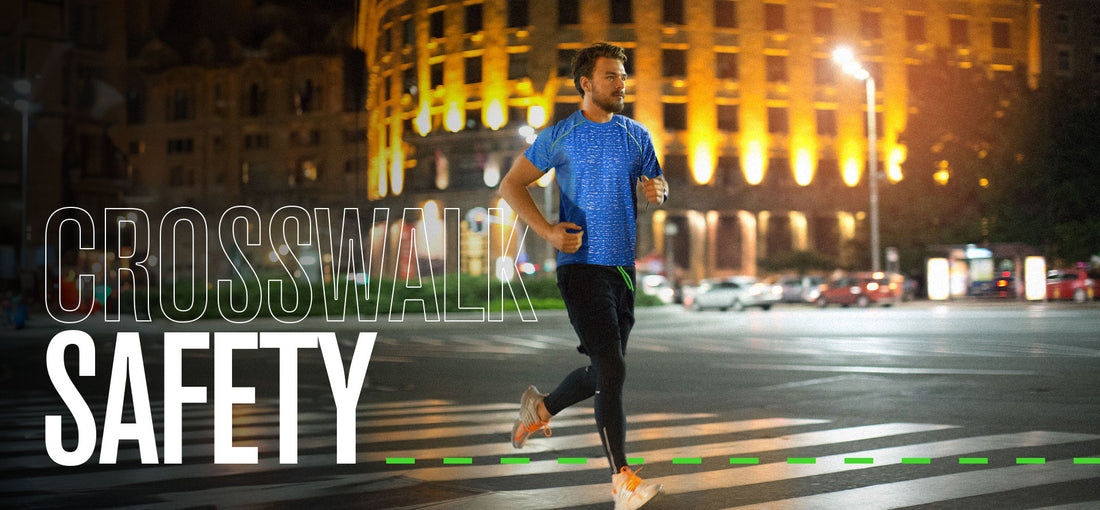Crosswalk safety is critical for runners and pedestrians alike, especially in areas where busy streets intersect with popular running and walking routes. Navigating these spaces safely requires more than just awareness; it demands proactive measures and a thorough understanding of best practices. As enthusiasts of outdoor activities, it's vital to prioritize our visibility, stay alert, and understand the dynamics of interacting with vehicular traffic. This article will equip you with essential tips and strategies for using crosswalks safely, ensuring that every run or walk is enjoyable and safe. Whether you're a seasoned runner, a casual walker, or guiding the next generation of pedestrians, these guidelines will help enhance your safety at every street crossing.
The Benefits of Crosswalks for Runner and Pedestrian Safety
Crosswalks are vital for runner and pedestrian safety, particularly where roads and pedestrian paths intersect. These designated crossing areas are marked distinctly, often with bright lines, signs, or flashing lights, to alert drivers to the presence of pedestrians and enhance visibility. Equipped with traffic control measures like stop signs, yield signs, and pedestrian signals, crosswalks ensure that vehicles stop or slow down, providing a safe window for pedestrians to cross. According to the United States Department of Transportation, pedestrian injuries can be reduced by up to 40% with high-visibility crosswalks, up to 42% with intersection lighting, and up to 25% with advance yield or stop markings and signs.
Crosswalk Safety Rules
Understanding and adhering to crosswalk safety rules is essential for maintaining harmony and road safety for pedestrians and drivers. Here’s a focused look at some critical safety rules concerning right of way and traffic signals at crosswalks:
Right of Way:
At crosswalks, pedestrians usually have the legal right of way. This means drivers must yield, stopping to allow pedestrians to cross safely. Pedestrians, however, should not assume safety merely based on this rule. It’s important to ensure that approaching vehicles are stopping and that drivers see you before you step onto the crosswalk. This is especially important at night when pedestrians and runners are recommended to wear reflective athletic shirts to ensure they are seen by approaching drivers.
Obey Traffic Signals:
Crosswalks often have traffic lights specifically designed for pedestrian use. Pedestrians must obey these signals without exception. Begin crossing only when the signal displays 'Walk.' If you're already in the middle of the crosswalk and the signal changes to 'Don't Walk' or begins to flash, continue to the other side as quickly and safely as possible. If the signal changes before you start crossing, wait for the next cycle.
Cross at Marked Locations:
Always use the marked crosswalks when crossing streets. These areas are specifically designed and situated to maximize pedestrian visibility and safety. Crossing elsewhere, such as mid-block or diagonally across intersections (unless expressly marked for diagonal crossing) undermines traffic control measures and increases the risk of accidents.
By strictly following these rules, pedestrians can greatly reduce their risk of accidents and ensure a safer environment for everyone involved. Remember, knowing and practicing crosswalk regulations protects and respects all road users' safety.
Additional Guidelines for Runner and Walker Safety
Beyond adhering to crosswalk safety rules, there are additional practices that walkers and runners can adopt to enhance their safety. Here’s a guide to some critical behaviors and precautions:
-
Visibility:
Ensure you are visible to drivers, especially in low-light conditions or adverse weather. Wear bright, reflective clothing or accessories that stand out. Reflective running gear is particularly important for runner safety, as runners often run in the early mornings or late evenings when visibility is naturally reduced.
-
Alertness:
Staying alert and free of distractions is crucial while walking or running near traffic. Avoid using headphones at high volumes or engaging in phone conversations. Your ability to hear approaching vehicles or other potential hazards can be the difference between a safe journey and an accident.
-
Defensive Walking/Running:
Adopt a defensive approach by assuming that drivers may not always see you or yield the right of way. Be prepared to stop or alter your path if necessary. Look both ways when crossing, even if you have the pedestrian signal on your side. Be especially cautious at intersections where vehicles may turn across your path.
-
Group Safety:
When running or walking in groups, remember group safety. Groups are more visible than individuals, enhancing safety, but all members must cross together and stay visible to drivers. Avoid spreading across crosswalks or cluttering walkways and pathways. Clear communication within the group about when and where to cross can prevent confusion and ensure that all members are accounted for before moving across roads.
By incorporating these guidelines into your routine, you can significantly improve your safety and the safety of those around you while walking or running.
Educating Children on Pedestrian Safety
Teaching children about pedestrian safety is essential to instill safe habits that can last a lifetime. Start by demonstrating the importance of using crosswalks and obeying traffic signals. Encourage children to make eye contact with drivers before crossing to ensure they are seen, and teach them always to look both ways, even when walking signals indicate it is safe. Discuss the dangers of distractions like smartphones and headphones, emphasizing the need to stay alert and aware of their surroundings while near or crossing roads. Role-playing different crossing scenarios can be an effective and engaging way to help children understand and remember these safety tips.
Ensuring safety at crosswalks is a shared responsibility that requires attention and cooperation from everyone—drivers, pedestrians, and runners. Understanding the basic rules of crosswalk use, adopting additional safety practices, and educating the younger generation can create safer environments for all road users. Each step towards enhanced awareness and preventative practices contributes to personal safety and an enjoyable experience on our shared roadways. Whether you're a casual walker or a dedicated runner, let's move forward with caution and diligence, making safety a priority at every step!

